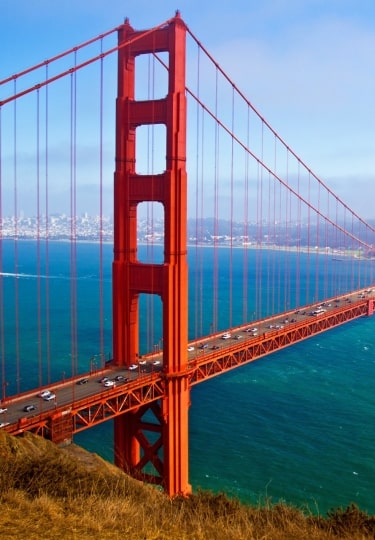The best time to visit California, famous for its bronzed surf culture and abundance of sun, falls into a wide meteorological window.
Such a long body of land throws up broad regional variation. Summer highs extend deeper into the year at California’s Mexico-bordering southern tip than it does in famously foggy San Francisco in the north.
While the best time to go to California is during the spring and summer months, it can still be fine in San Diego reaching into late autumn, with the surfers only beginning to change into thicker wetsuits come October. Be aware, though, that precipitation can increase substantially during El Niño years.
Visiting California By Season
Summer
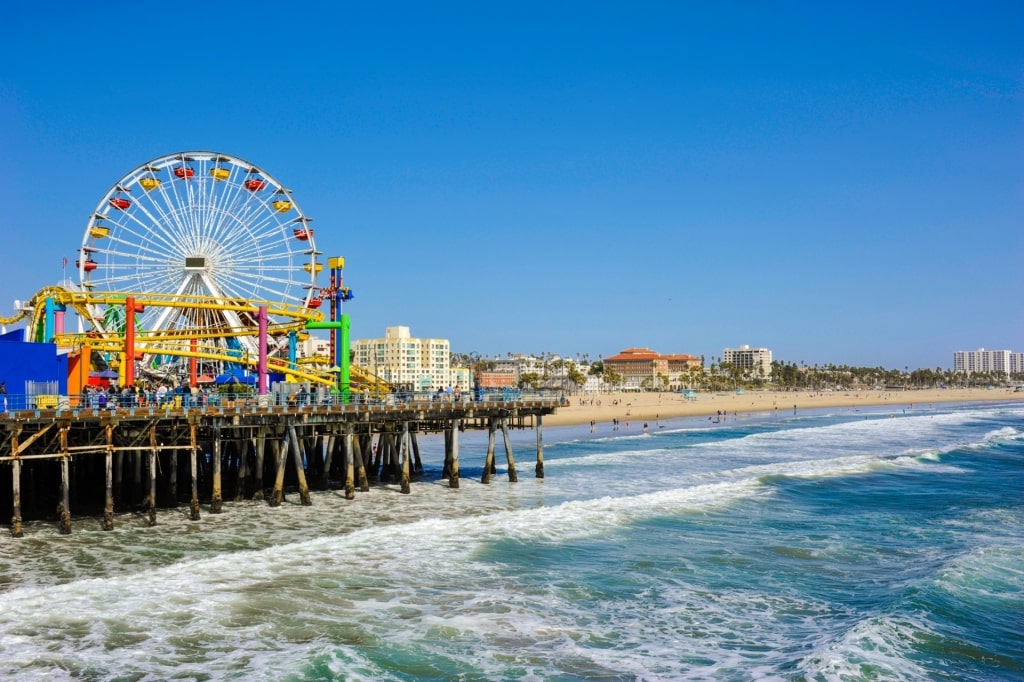
Santa Monica Pier
Summer in California is a time of cobalt blue skies, endless sunshine, and average temperatures between 66°F and 86°F or 19° and 30°C. Along the coast in early June, you can sometimes encounter what the locals refer to as “June gloom”. This phenomenon refers to a marine layer of cloud that burns off as the morning grows late.
As such, the months of July and August are the best time to visit California for consistently fine, hot weather. By the time the highs of August arrive, visitors and locals are flocking to the cooling sea breezes and the ice cream parlors of the beach cities. Rainfall throughout the state is so low at this time as to be irrelevant.
Read: Best Family Beaches in California
Fall
Fall is arguably the best time to visit California, with outstanding temperatures persisting throughout the state and a drop in visitor numbers. Los Angeles enjoys a range of daily highs from 84°F or 29°C in September to 73°F or 23°C in November. San Diego drops from 79°F or 26°C to 70°F or 21°C over the same period.
Meanwhile, San Francisco in September offers its best temperatures of the year 72°F or 22°C, with minimal rainfall and little sign of the famous fog rolling into the bay. Ride a tram through the city, cycle the Golden Gate Bridge and catch a ferry to Alcatraz beneath radiant blue skies.
Or head further north still, to the vinelands of Napa Valley and coastal Sonoma. Have tastings at vineyards during the grape harvesting season and hike the redwood-shaded trails.
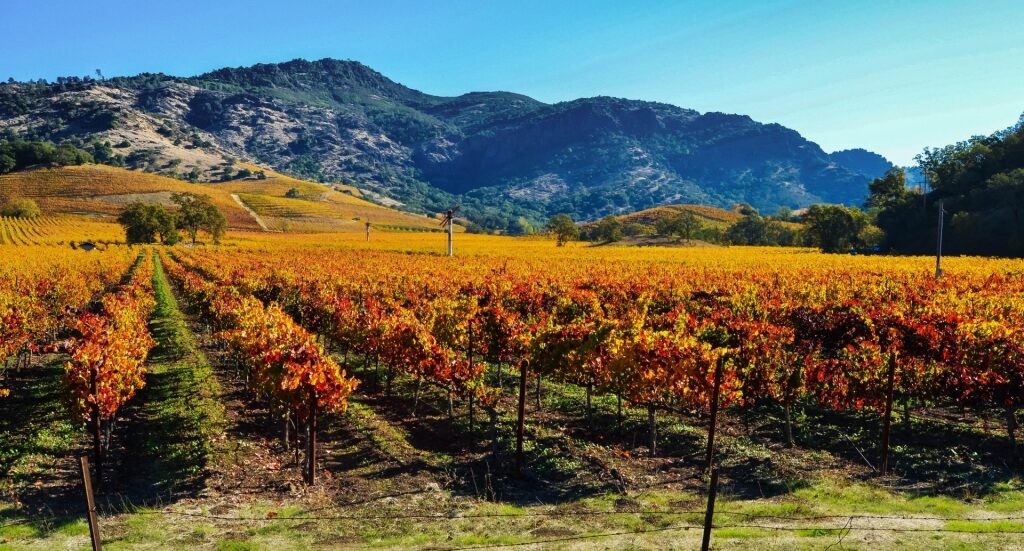
Napa Valley
Winter
Winters are mild and a little wet, more so in the north, with January in San Francisco receiving an annual high of 127mm of rain while temperatures remain relatively mild at 57°F or 14°C.
In the far south of the state, San Diego has daily highs of 66°F or 19°C with under half the amount of San Francisco’s average rainfall.
Spring
Arrive in southern California in March and you’ll find snow on the mountains and many beautiful days in Los Angeles and San Diego. Daytime temperatures average around 70°F or 21°C in the south, while visitors to San Francisco at this time should pack a light jacket with highs of 61°F or 16°C.
Come in May, and the chance of rainfall in southern California has dropped significantly since March from 77mm to 6mm, with a corresponding drop-off in San Francisco from 91mm to 9mm. Over the same period, temperatures have risen in both the north and the south by a good few degrees.
April heralds wildflower season in the high desert. Late spring also brings Cinco de Mayo festivities to the southern cities and a sense that, despite the occasional “May gray” marine layer, summer is imminent.
When Is Rainy Season?
The winter months of December, January, and February are typically the wettest in the state. The amount dispensed by the heavens varies by latitude, as you might expect.
If it should rain while in San Francisco, find shelter in the Aquarium of the Bay, the Museum of Modern Art, or one of its heavenly-scented coffee shops. If it rains while you’re in Los Angeles, it’s possible that you won’t even notice.
When Is High Season?
The summer is the high season in California, with June through to August seeing the greatest influx of visitors to the state as the fine weather settles in for the duration. The north can still be a little cool, with San Francisco’s atmospheric fog smothering the Golden Gate Bridge during this period.
In southern California, the temperatures are wonderful, the sea is warmer, and the pastels of the sportscars cruising the Pacific Coast Highway pop beneath the sunshine.
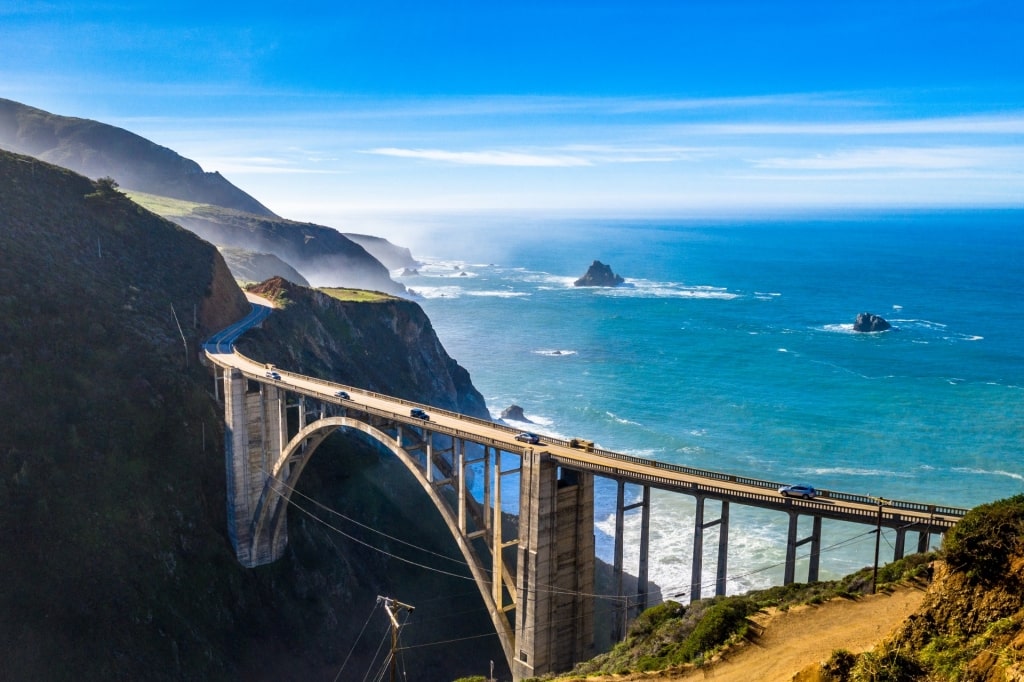
Pacific Coast Highway
When Is Shoulder Season?
The Golden State’s shoulder seasons are late spring, April and May, and early fall, September and October. Late spring brings very pleasant temperatures, wildflowers gilding the national park hiking trails, and there’s more space on the beaches.
In early fall, gentler temperatures arrive in southern California. This is also the best time of year to visit northern California during its “Indian Summer”, with autumn beginning to flood the city parks and countryside with arboreal color.
When Is Low Season?
Through November to March, California’s low season, the lines for rides in Disneyland are noticeably shorter. Nevertheless, the weather remains mild and this is the best time of year for visiting the state’s deserts, such as Joshua Tree and Death Valley. Swim in the ocean in the morning and ski in the afternoon with plenty of powder in the higher elevations.
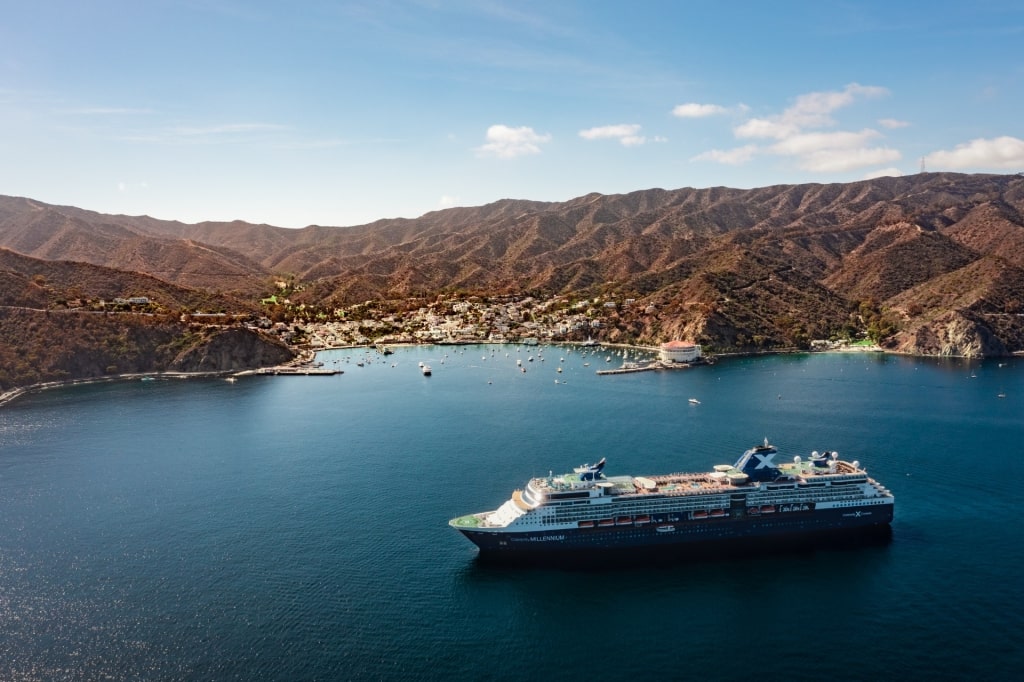
Catalina Island
Would you like to discover California’s golden bridges and beaches for yourself? Browse Celebrity’s California cruises and find the perfect itinerary.
